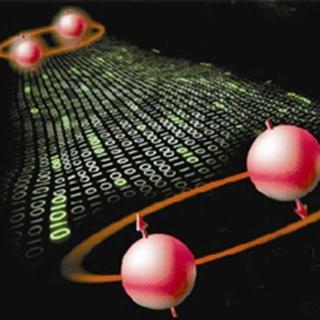
介绍:
Within months, China plans to open the world’s longest quantum communications network: a 2,000km-long data link connecting military and government agencies in Beijing and Shanghai. By 2016, the government plans to extend this network into space, to become the first country to launch a quantum communications satellite, allowing data transfers at close to the speed of light.
Physicists around the world have spent years researching quantum communications technology, but China’s 2016 satellite launch would be a world-first in the race to develop faster and more secure data networks.
It's likely the technology will initially be used to transmit sensitive government and military information, but in the future could extend to civilian use.
The satellite would use quantum key distribution (QKD) technology to transmit encoded data. QKD relies on cryptographic keys transmitted via light-pulse signals, and is said to be nearly impossible to hack.
According to Pan Jianwei, professor of Quantum Physics at the University of Science and Technology of China (USTC) and head honcho of the research project behind the new data network, a satellite-based quantum communications system could be used to build a secure information bridge between Beijing and Urumqi, capital of the restive Xinjiang Uyghur Autonomous Region.
Pan also said, "China is completely capable of making full use of quantum communications in a regional war," and that, "the direction of development in the future calls for using relay satellites to realize quantum communications and control that covers the entire army."
But, researchers are also working on configuring the technology to civilian uses.
The new Shanghai-Beijing quantum communications network follows successful test projects in Hefei in 2012, and Jinan in 2014, which linked official agencies, health care facilities, and financial institutions.
Since 2009 USTC has been building up Anhui Quantum Communication Technology Co., a commercial enterprise to produce equipment based on quantum communications technology developed by Pan and his team. General Manager Zhao Yong said clients include financial institutions and government agencies seeking to improve data security.
Nevertheless, according to one quantum code expert, so far development has focused solely on military use and national security. “How important it will be for the public and in everyday life are questions that remain unanswered.”
At this stage of the game, says Pan, the focus is still on technological development, not commercial application. Traditionally, the high costs of development have kept private capital away, and it remains to be seen whether the technology has any commercial value.
Many experts also question whether the new technology has been misidentified.
Quantum communications systems have long only been capable of spanning short distances. According to Guo Guangcun, director of USTC’s Quantum Communications Lab, networks now operating and those being built in China “achieve encryption only,” whereas true communications networks “involve content.”
"What we can do now is merely encrypt data, which is far from real quantum communications," said one expert who declined to be named.
Regardless, Pan and his team intend to keep racing ahead. The Beijing-Shanghai network and satellite launch next year are just the beginning. China hopes to complete a QKD system linking Asia and Europe by 2020, with a worldwide network in place by 2030.
For Caixin Online, this is Nick Horton
大家还在听

